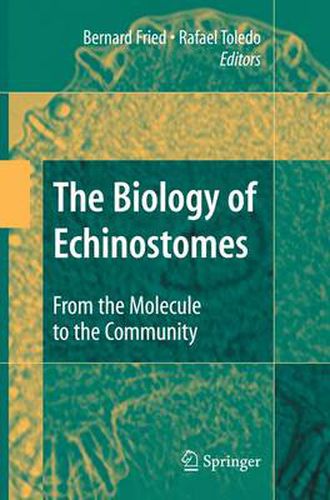Readings Newsletter
Become a Readings Member to make your shopping experience even easier.
Sign in or sign up for free!
You’re not far away from qualifying for FREE standard shipping within Australia
You’ve qualified for FREE standard shipping within Australia
The cart is loading…






This title is printed to order. This book may have been self-published. If so, we cannot guarantee the quality of the content. In the main most books will have gone through the editing process however some may not. We therefore suggest that you be aware of this before ordering this book. If in doubt check either the author or publisher’s details as we are unable to accept any returns unless they are faulty. Please contact us if you have any questions.
Echinostomes are medically- and veterinary-important parasitic flatworms that invade humans, domestic animals and wildlife and also parasitize in their larval stages numerous invertebrate and cold-blooded vertebrate hosts. The interest in echinostomes in parasitology and general biology comes from several areas: (1) Human infections; (2) Experimental models; (3) Animal infections; (4) Systematics.
The application of novel techniques is moving the echinostomes to the frontline of parasitology in fields such as systematics, immunobiology in vertebrate and invertebrate organisms and proteomics among others. The Biology of Echinostomes demonstrates the application of new techniques to a group of trematodes that may serve to obtain information of great value in parasitology and general biology. The book includes basic topics, such as biology and systematics, as well as more novel topics, such as immunobiology, proteomics, and genomics of echinostomes. The authors of each chapter emphasize their content with: (i) the most novel information obtained; (ii) analysis of this information in a more general context (i.e. general parasitology); and (iii) future perspectives in view of the information presented. The subjects are analyzed from a modern point of view, considering aspects such as applications of novel techniques and an analysis of host-parasite interactions.
$9.00 standard shipping within Australia
FREE standard shipping within Australia for orders over $100.00
Express & International shipping calculated at checkout
This title is printed to order. This book may have been self-published. If so, we cannot guarantee the quality of the content. In the main most books will have gone through the editing process however some may not. We therefore suggest that you be aware of this before ordering this book. If in doubt check either the author or publisher’s details as we are unable to accept any returns unless they are faulty. Please contact us if you have any questions.
Echinostomes are medically- and veterinary-important parasitic flatworms that invade humans, domestic animals and wildlife and also parasitize in their larval stages numerous invertebrate and cold-blooded vertebrate hosts. The interest in echinostomes in parasitology and general biology comes from several areas: (1) Human infections; (2) Experimental models; (3) Animal infections; (4) Systematics.
The application of novel techniques is moving the echinostomes to the frontline of parasitology in fields such as systematics, immunobiology in vertebrate and invertebrate organisms and proteomics among others. The Biology of Echinostomes demonstrates the application of new techniques to a group of trematodes that may serve to obtain information of great value in parasitology and general biology. The book includes basic topics, such as biology and systematics, as well as more novel topics, such as immunobiology, proteomics, and genomics of echinostomes. The authors of each chapter emphasize their content with: (i) the most novel information obtained; (ii) analysis of this information in a more general context (i.e. general parasitology); and (iii) future perspectives in view of the information presented. The subjects are analyzed from a modern point of view, considering aspects such as applications of novel techniques and an analysis of host-parasite interactions.